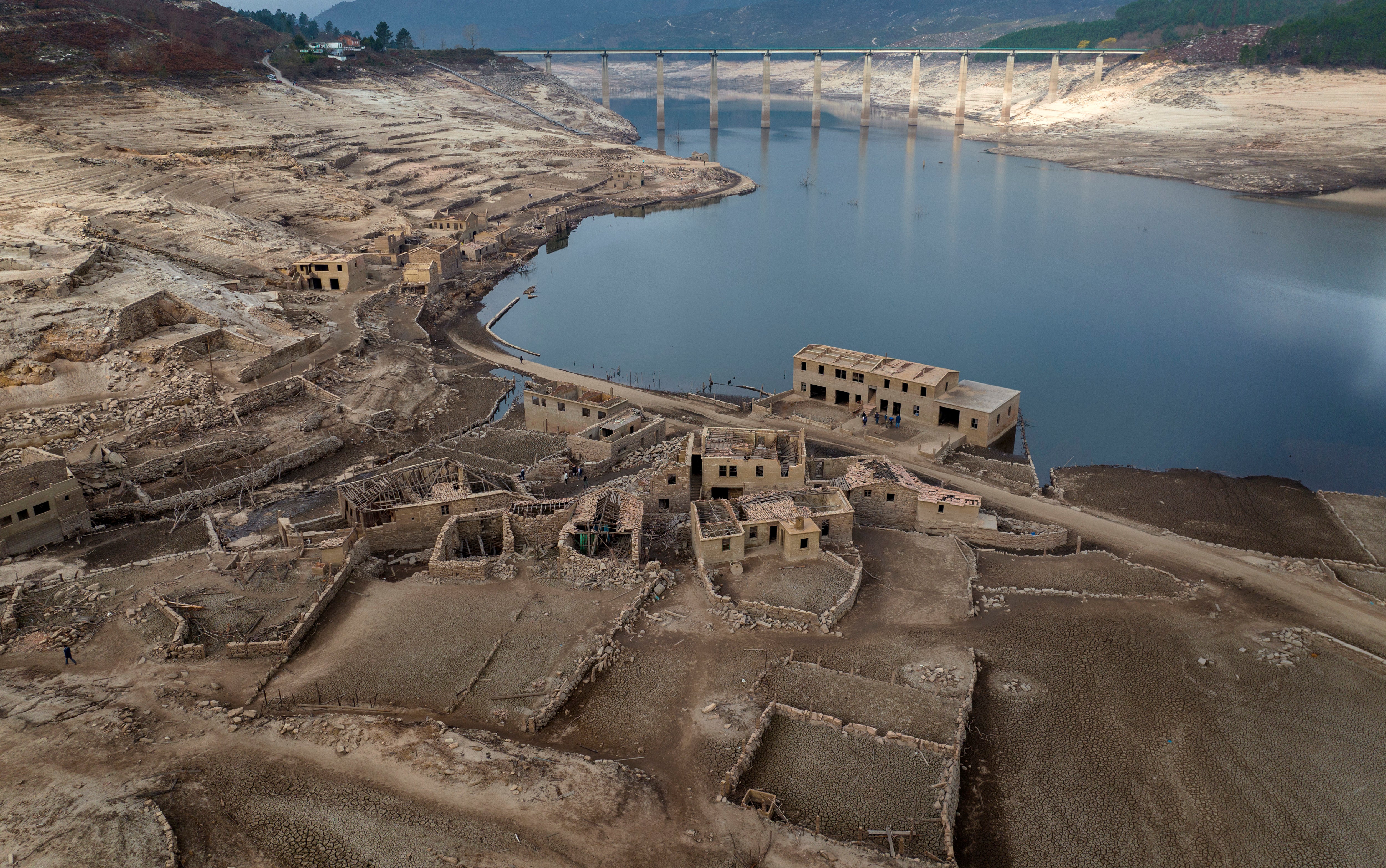Dry winter drains reservoirs and ruins crops in Spain and Portugal
Large sections of Spain are experiencing extreme or prolonged drought, with rainfall this winter at only one-third of the average in recent years

Record levels of low or no rainfall at all are leaving farmers in Portugal and Spain, who are growing produce for all of Europe, worried that their crops for this season will be ruined.
In the last three months of 2021, Spain recorded just 35 per cent of the average rainfall it had seen during the same period from 1981 to 2010. But there has been almost no rain since then.
According to the national weather agency AEMET, in this century, only in 2005 has there been a January with almost no rain. If clouds don’t unleash in the next two weeks, emergency subsidies for farmers will be needed, authorities said.
But Ruben del Campo, a spokesperson for the weather service, said the below-average rainfall over the last six months is likely to continue for several more weeks, with hopes that spring will bring much-needed relief.
While only 10 per cent of Spain has officially been declared under a “prolonged drought,” there are large areas facing extreme shortages that could impact the irrigation of crops. Roofs peeking out of the water have become a common sight every summer at the Lindoso reservoir in northwestern Spain. In especially dry years, parts would appear of the old village, submerged three decades ago when a hydropower dam flooded the valley. But never before has the village emerged in its entirety in the middle of the usually wet winter season. While the arid zones of the Iberian Peninsula have historically experienced periods of drought, experts say climate change has exacerbated the problem.
The valley around the Guadalquivir River in Spain’s southwest was declared under prolonged drought in November. It is now the focus of a fierce environmental dispute over water rights near Donana National Park, a World Heritage wetland site. The government of the Andalusia region wants to grant water rights to farmers on land near the park, but critics say the move will further endanger a major wildlife refuge that is already drying up.
“The past two, three years have been dry, with the tendency toward less and less rain,” said Andres Gongora, a 46-year-old tomato farmer in southern Almeria. Mr Gongora, who expects the water he uses from a desalinating plant to be rationed, is still better off than other farmers who specialise in wheat and grains for livestock feed. “The cereal crops for this year have been lost,” Gongora said.
The leading association of farmers and livestock breeders in Spain, COAG, warns that half of Spain’s farms are threatened by drought this year. It says if it does not rain heavily in the coming month, rain-fed crops including cereals, olives, nuts and vineyards could lose 60 to 80 per cent of their production.
But the association is also worried about crops that depend on irrigation, with reservoirs under 40 per cent of capacity in most of the south. Spain’s government plans to dedicate over €570m (£477m) from the EU’s pandemic recovery fund to make its irrigation systems more efficient, including incorporating renewable energy systems.
Spanish agriculture minister Luis Planas said this week the government will take emergency measures if it doesn’t rain in two weeks. Those would likely be limited to economic benefits to palliate the loss of crops and revenues for farmers.
Neighbouring Portugal has also seen little rain since last October. By the end of January, 45 per cent of the country was enduring “severe” or “extreme” drought conditions, according to the national weather agency IPMA. Rainfall from October 1 through January was less than half the annual average for that four-month period, alarming farmers who are short of grass for their livestock.
Unusually, even the north of Portugal is dry and forest fires have broken out there this winter. In the south, crickets are already singing at night and mosquitoes have appeared – traditional signs of summer. The IPMA doesn’t forecast any relief before the end of the month.
Portugal has witnessed an increase in the frequency of droughts over the past 20 to 30 years, according to IPMA climatologist Vanda Pires, with lower rainfall and higher temperatures. “It’s part of the context of climate change,” Pires told The Associated Press. And the outlook is bleak: scientists estimate that Portugal will see a drop in average annual rainfall of 20 to 40 per cent by the end of the century.
Subscribe to Independent Premium to bookmark this article
Want to bookmark your favourite articles and stories to read or reference later? Start your Independent Premium subscription today.
